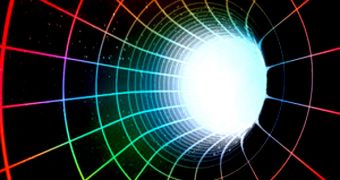Because of their peculiarities, black holes have been extensively studied over the past few decades. They are extremely dense blobs of matter, the remains of imploded massive stars, that act on the matter around them via immense gravitational forces. They also distort space and time, and “eat up” photons, thus trapping even light. But, while astronomers have focused their attention on these structures, they severely neglected to study white holes, the reverse equivalent of black holes.
The constructs are believed to be exotic forms of matter arrangements that do precisely what black holes do, except in reverse. According to investigator Stephen Hsu, who is based at the University of Oregon in Eugene, white holes should receive a lot more attention from astrophysicists, as their study could reveal the key to understanding numerous phenomena taking place inside the Universe. Hsu says that it's time for the international astronomical community to strive to get some deeper theoretical knowledge on the peculiar space structures.
An idea proposed by renowned physicist Stephen Hawking in the 1970s makes things even more interesting. The expert said that, under some very specific conditions, black and white holes should look and behave in exactly the same manner. This only happens when the structures reach perfect thermal equilibrium with everything around them. In such a situation, both black and white holes should take in the same amount of matter, and emit the same amount and type of radiation, virtually becoming indistinguishable from each other.
Hsu says that his new investigation predicts how white holes would behave in the hypothetical situation when they are in vacuum. Given this condition, black holes would emit Hawking radiation, but white holes would be unable to absorb radiation (the reverse action), due to the fact that it resides in vacuum. As a direct result, the structure would explode, releasing incredibly vast amounts of thermal energy.
“Isolated white holes explode into quasithermal radiation,” Hsu says, quoted by Technology Review. Details of his work are published in the online scientific journal arXiv. One implication on his idea is the fact that white holes cannot be made to last forever, similarly to how black holes can be conditioned to do so, if they are not disturbed. Another conclusion is that stable white holes cannot exist in free space. The construct is only (theoretically) possible where matter and energy exist, but observations have never identified such a structure.

 14 DAY TRIAL //
14 DAY TRIAL //